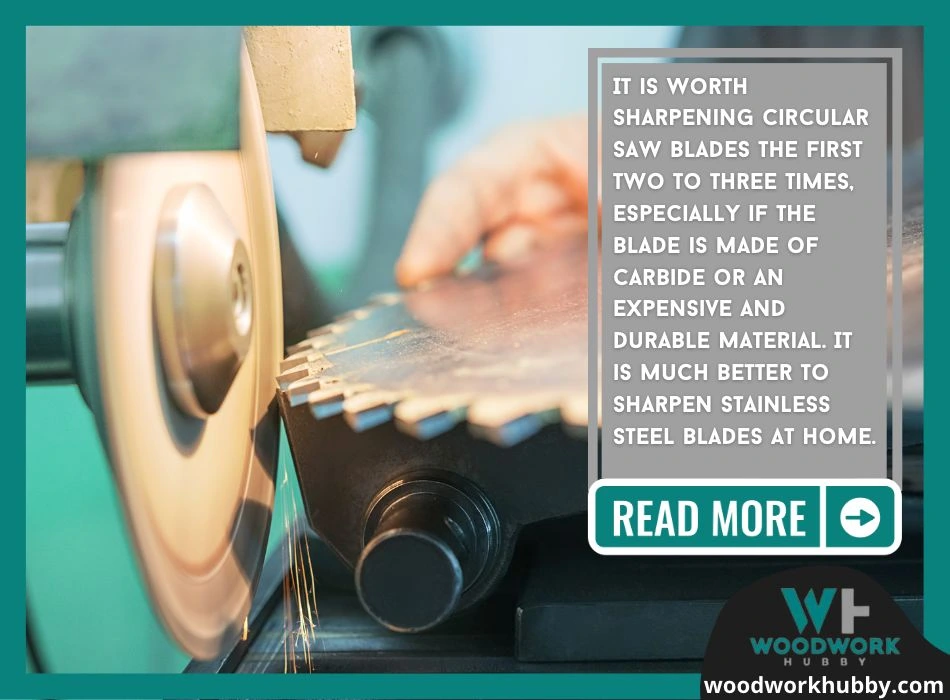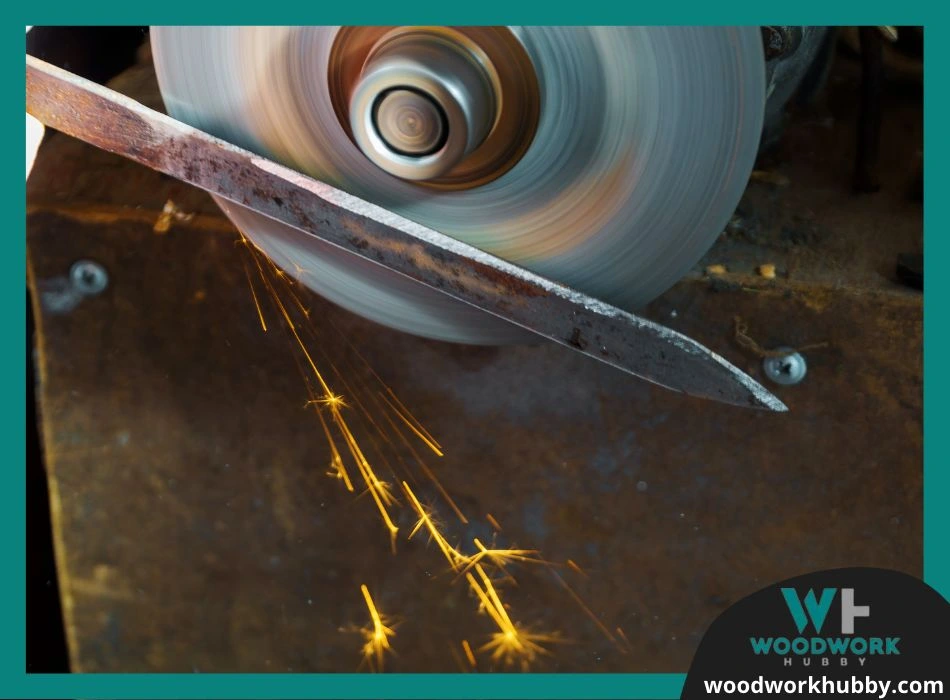Whenever I clean out my tool stash, I am semi-convinced that I could qualify for a world record for some of the bluntest sawblades. Novice woodworker friends wonder why I don’t get my HSS blades sharpened. This lead me to investigate whether it is worth sharpening circular saw blades.
It is worth sharpening circular saw blades the first two to three times, especially if the blade is made of carbide or an expensive and durable material. It is much better to sharpen stainless steel blades at home.
In this article, you will learn more about different types of blades and their sharpening costs alongside the prices of new units. This will help you see if sharpening is worth it. See the costs of sharpening blades here.
Is It Worth Having Circular Saw Blades Sharpened?
It is worth having circular saw blades sharpened if the cost of the new blade is more than $24. If the cost of the new blade is below $12, you should sharpen it at home.
How Many Times Can You Sharpen A Circular Saw Blade?
You can sharpen a circular saw blade 2 to 4 times based on the material it is made out of before it should be replaced with a new one. Initially, the cost of sharpening is lower than the cost of getting a new one. But eventually, it starts needing sharpening more often, which makes it a liability.

For the first 2 times, almost all blades are worth sharpening, but the more expensive the blade, the more economical it is to sharpen it. Here is how I classify sharpening practicality based on blade material.
| Types of Blades | Is it worth sharpening | Maximum Frequency |
|---|---|---|
| Carbon Coated Steel | Yes | 3 times per blade |
| Stainless Steel | Somewhat | 3 times per blade |
| Diamond | No | Replace when dull |
| Carbide Tipped | Yes | 2 times per blade |
| Solid Carbide | Yes | 4 times per blade |
The more expensive the blade material, the longer it lasts without sharpening. And when it gets dull, it is worth the price of sharpening. Cheaper blades get dull quicker and can be sharpened 2 to 3 times, but the price of sharpening is often higher than the blade itself.
If you have a steel saw blade, you should probably sharpen it at home. That’s what I do.

The advantages of sharpening a circular blade at home include the following:
- You save money – Paying for professional sharpening isn’t worth it for cheaper blades. But that doesn’t mean you should continue using them after they have become blunt.
- You increase your saw motor’s lifespan – The saw doesn’t have to work as hard to cut wood when the blade is sharp enough to slice through without too much force.
- You can get better cuts – The overall cut quality improves with blade sharpness regardless of the project and blade material. Instead of postponing blade sharpening until you have the time to take it to a tool shop, you might as well do it at home.
How Do You Sharpen A Circular Saw Blade At Home?
To sharpen a circular saw blade at home, you should glue 220-grit sandpaper to a wood block that has a narrow enough edge and use it to individually file each blade tooth. After filing each tooth 5 to 10 times, the circular blade is fully sharpened.
When I first learned circular sharpening, I was confused by the broad description my friend at the local lumberyard gave me. So I will be more precise.
Here are the exact steps to sharpen circular saw blade teeth.
A video showing how to sharpen a circular saw blade.
Please note that most circular blades can be sharpened, but there are blades that are best left to specialists. I haven’t had a Diablo blade in a while, but if I did, I’d not be sharpening it at home.
Can Diablo Saw Blades Be Sharpened?
Diablo saw blades can be sharpened, but because of their distinct tooth design, they should be sharpened by experts authorized to sharpen Diablo saw blades. Authorized sharpening outlets command a higher price, and after a few attempts, the sharpening costs can even out the price of a new Diablo blade.
This brings me to a very important point. The feasibility and diminishing returns of sharpening. Assuming that you’re not using a homemade sandpaper filer to sharpen your circular saw blade, you will pay money every time you get a blade sharpened.
Video showing why some people don’t sharpen their blades
Comparing the cost of sharpening to the cost of getting a new blade of the same type is very important. I’ve compiled a handy table to help you out with that.
Cost comparisons between sharpening a saw blade and buying
| Blade | Number of teeth | Price of blade | Cost per Sharpening |
|---|---|---|---|
| SkilSaw Carbide Blade | 24 teeth | $13.35 | $12 |
| Jiuneng 4-inch Carbide-Tipped Blade | 30 teeth | $6 | $15 |
| SawStop 10-inch Blade | 40 teeth | $47 | $20 |
| SawStop Titanium Blade | 80 teeth | $109 | $24 |
| Chuandao 10-inch 100-teeth Blade | 100 teeth | $29.99 | $25 |
| Tenryu Carbide-Tipped Saw Blade | 120 teeth | $172.50 | $30 |
Final Thoughts – Is It Worth Sharpening Circular Saw Blades?
Sharpen your circular blade at home if the cost of sharpening it once is higher than getting a new blade if it has over 40 teeth. That can be the case with some steel blades. Carbide blades are better sharpened by an expert. After 2 to 3 sharpening sessions, the blade is at the end of its lifespan and must be swapped.




